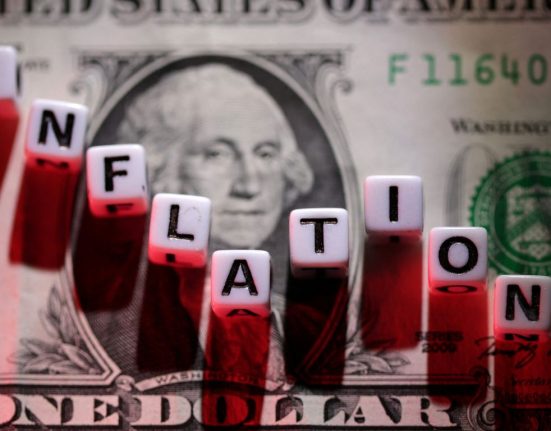The U.S. dollar index, a crucial measure of the currency’s strength against six major peers, including the yen, euro, and sterling, has demonstrated significant gains. With a rise of 0.22%, the index reached 103.20, continuing its overnight climb of 0.46%. This surge in the U.S. dollar index has attracted attention and raised questions about the factors driving its ascent. In this article, we delve into the reasons behind the strengthening of the U.S. dollar and examine the implications it holds for major currencies.
Factors Driving the U.S. Dollar Index
Improved Economic Outlook: The U.S. dollar’s recent surge can be attributed, in part, to an improved economic outlook. The United States has witnessed encouraging indicators, such as robust job growth, steady inflation rates, and positive consumer sentiment. These factors have boosted investor confidence in the U.S. economy and subsequently strengthened the dollar.
Divergence in Monetary Policies: Another key driver for the U.S. dollar’s strength is the divergence in monetary policies among major economies. The Federal Reserve’s relatively hawkish stance, characterized by potential interest rate hikes and tapering of bond purchases, has contrasted with the more accommodative policies pursued by the European Central Bank (ECB) and the Bank of Japan (BOJ). This divergence has attracted capital inflows into the U.S., pushing up the value of the dollar.
Geopolitical Factors: Geopolitical factors, including trade tensions and uncertainties, have also played a role in the strengthening of the U.S. dollar. Ongoing disputes between the United States and its major trading partners, such as China and the European Union, have caused market participants to seek the relative safety of the dollar as a global reserve currency.
Impact on Major Currencies
Japanese Yen: The strengthening of the U.S. dollar index has put downward pressure on the Japanese yen. As the dollar gains strength, the yen weakens, impacting Japan’s export-oriented economy. A weaker yen makes Japanese goods relatively cheaper for foreign buyers, boosting exports and potentially supporting economic growth.
Euro: The euro has experienced a decline against the U.S. dollar amid the recent surge. The divergence in monetary policies, with the ECB maintaining an accommodative stance to support the Eurozone’s economic recovery, has contributed to the euro’s depreciation. Additionally, uncertainties surrounding political developments within the European Union, such as Brexit, have added to the downward pressure on the euro.
British Pound: Similar to the euro, the British pound has faced headwinds against the strengthening U.S. dollar. Brexit-related uncertainties, combined with concerns about the UK’s economic growth and potential interest rate differentials, have weighed on the pound. The U.S. dollar’s upward trajectory has made imports costlier for UK consumers, potentially impacting domestic inflation.
Expert Opinions on the Dollar’s Rise
Financial experts and analysts have been monitoring the U.S. dollar’s recent climb and have shared their insights on the matter. Some believe that the dollar’s strength is likely to persist in the near term, driven by expectations of continued economic growth and the potential for monetary tightening by the Federal Reserve. Others emphasize the importance of monitoring geopolitical developments and trade dynamics, which could influence the dollar’s trajectory going forward.
Conclusion
In summary, the U.S. dollar index has experienced a notable surge, rising by 0.22% to reach 103.20, building upon its overnight climb of 0.46%. Improved economic outlook, divergent monetary policies, and geopolitical factors have contributed to the dollar’s strength. This rise in the U.S. dollar has had an impact on major currencies, including the Japanese yen, euro, and British pound. As experts continue to assess the situation, it remains to be seen how long this trend will continue and what implications it may hold for global economies and trade dynamics.










